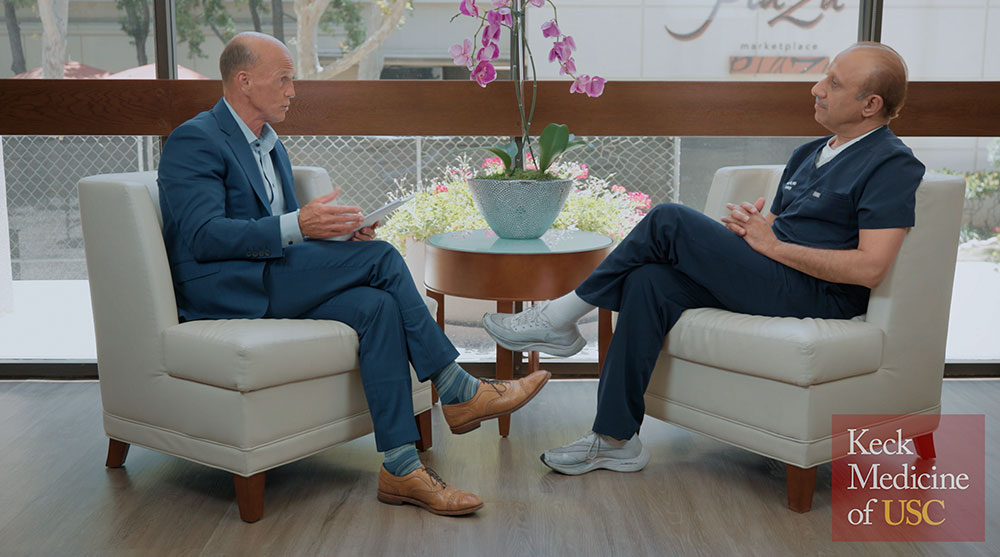
Rod Hanners, CEO of Keck Medicine of USC, talks with the executive director of USC Urology about the new center to advance the field of urology through surgical and clinical-related AI research.
“Conversations with Rod” is a video series featuring Rod Hanners, CEO of Keck Medicine of USC, talking with Keck Medicine doctors about our innovative medical care and research. In this video, Hanners sat down with Inderbir Gill, MD, executive director of USC Urology. He treats patients at Keck Hospital of USC, USC Norris Comprehensive Cancer Center and USC Verdugo Hills Hospital. Watch the full video below — or read excerpts from their conversation.
Interview Excerpts
What motivates you?
Inderbir Gill, MD: Taking care of patients and people who come to us in their hour of need, who are scared and are hurting, motivates me. To be able to come in, give confidence, give assurance and then be able to take care of the hurt that they’re having is motivating. What gets me out of bed is taking the very best care of patients that I can in the most empathic way possible, so that they feel that not only are they with a medical professional, but they’re with somebody who really cares about them.
You recently founded the AI Center at USC Urology. Can you tell us about the work you’re doing with our electronic medical records?
IG: I’m really excited about artificial intelligence (AI). I’m particularly excited about how AI can be used to improve the patient experience and physician burnout. Physician burnout is rampant with record keeping. It’s really a downer for physicians to be doing repetitive, scribe-like work that we didn’t go to medical school for. We went to medical school to take care of folks, as opposed to typing away on the electronic medical record (EMR).
The field of urologic surgery has come a long way from open to minimally invasive, robotic-assisted techniques. Where do you see the next frontier going?
IG: The only thing that’s changed is how we do it. We used to do surgery with a big cut. Now we do it through the console. How we do it has been changed. That’s it. What we do has not been changed. So, I want us to now progress from changing how we do surgery to changing what we do. This means marrying rigid robotics, as we currently know it, with flexible robotics that go in through a natural orifice, for example through the mouth or other natural orifices, to get inside the patient. The combination of these two techniques will allow us to do things that currently we cannot imagine.
Topics
